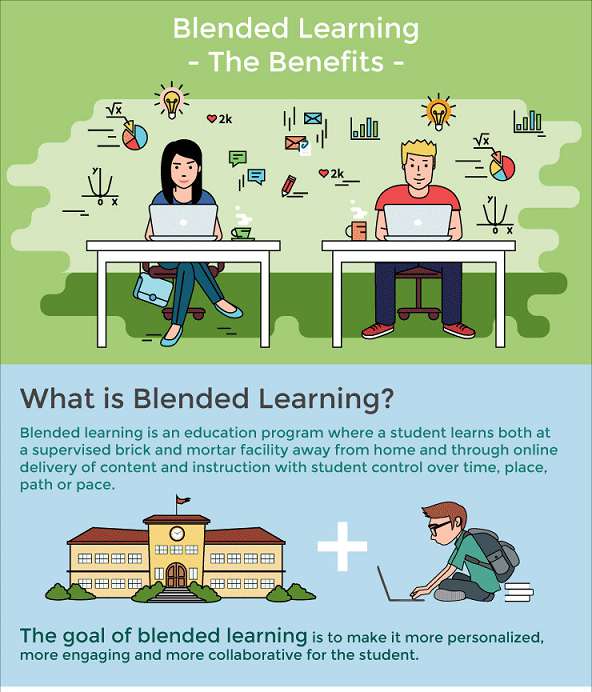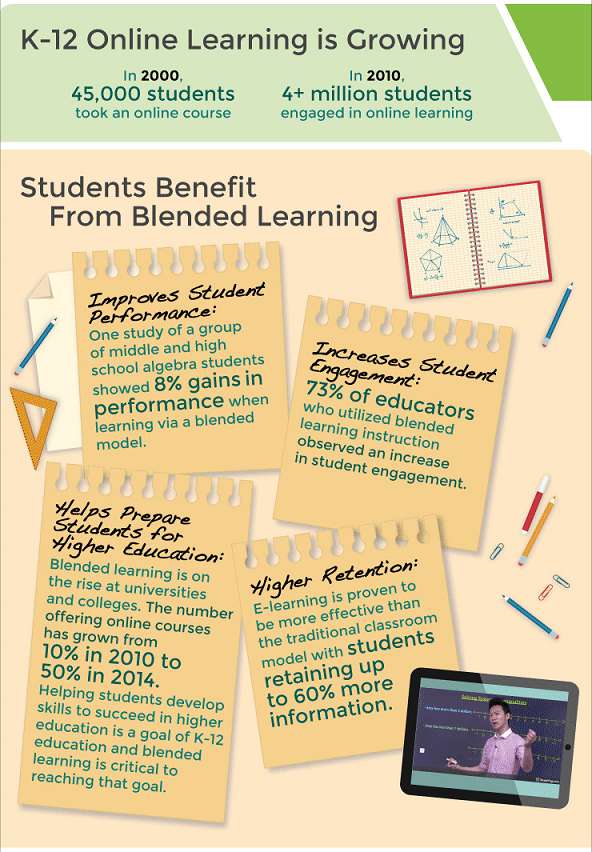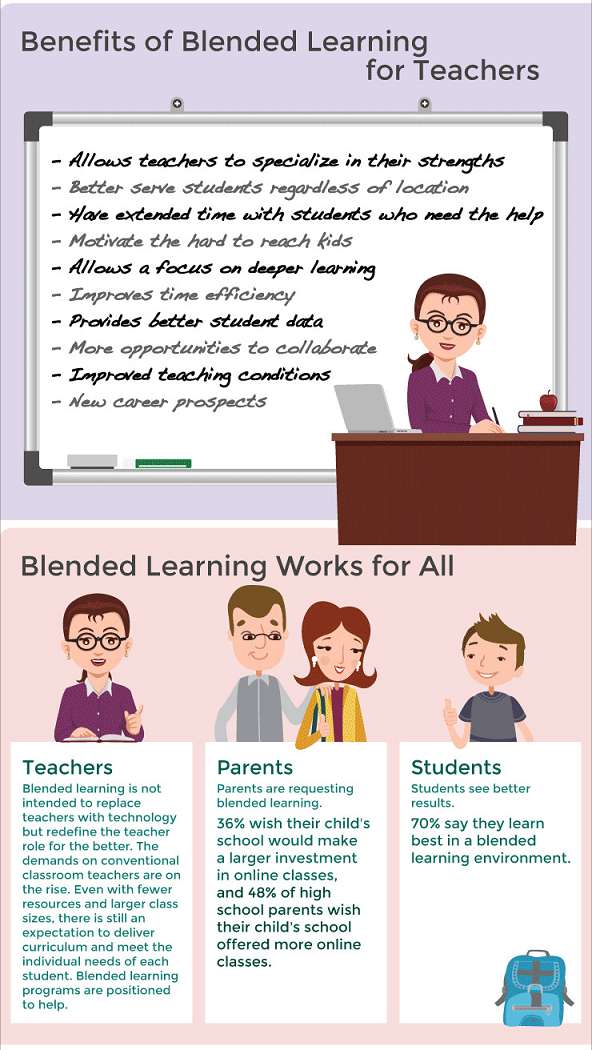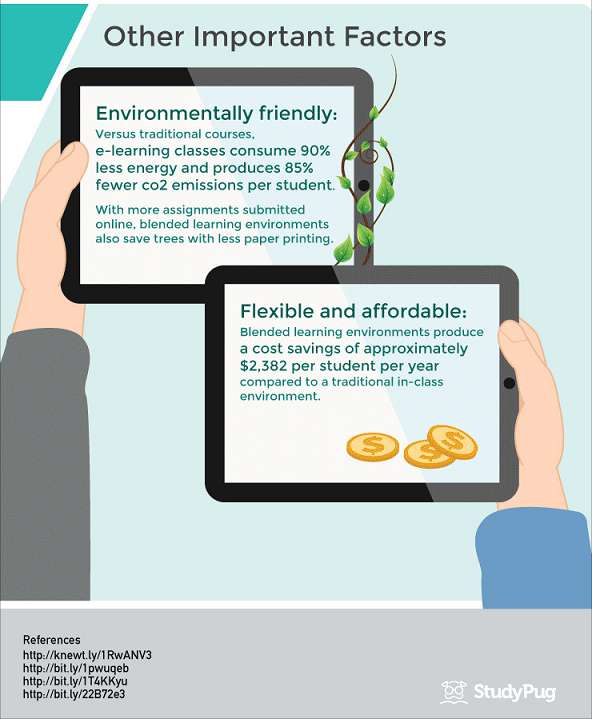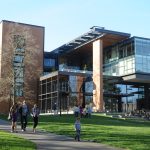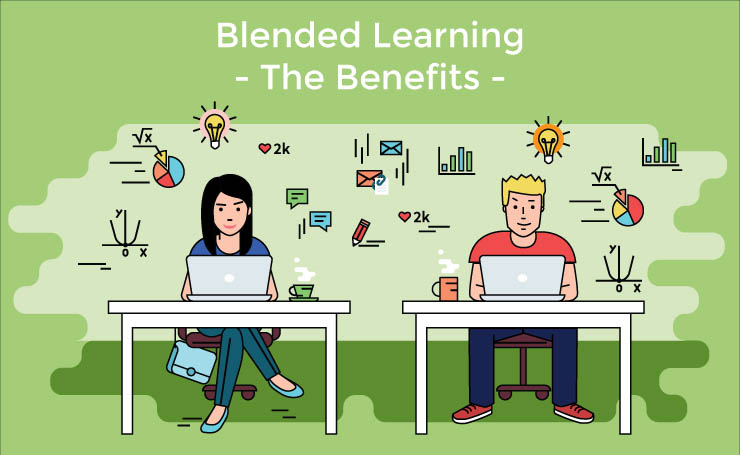What is blended learning?
Since blended education – more commonly known as blended learning — is a growing trend at post-secondary institutions across North America, both parents and students will want to familiarize themselves with the concept and understand how it works and why its popularity is increasing. Some places also call this type of education hybrid learning. Whatever you call it, it’s generally recognized to be the type of learning to be employed in a typical school of the future.
Blended education ideally combines classroom and online approaches to teaching and learning, offering more flexibility to teachers and a richer experience to students. The successful blended experience, says Professor Tony Bates, author of Teaching in a Digital Age: Guidelines for Designing Teaching and Learning, will create optimum synergy between the in-person sessions and learning online. Blended learning focuses on outcomes, employing a variety of methods to aid the students in learning the required material.
Writing in Education Week magazine teacher Bill Tolley says that many teachers are struggling with blended learning models because it means relinquishing some authority over content and how time is allocated and replacing it with “an asynchronized, individualized and messy process.” Tolley contends, however, that it is worth the struggle, because the benefits outweigh the inconveniences and it is the only way to remain relevant “in a world where modern learning can easily outpace traditional teaching.”
Student Satisfaction
A 2013 study conducted by Educause, a not-for-profit association of IT professionals committed to advancing higher education, bears out Tolley’s contention that blended schools are the way of the future. The organization surveyed 1.6 million undergraduate college and university students and received responses from 113,000 respondents in 13 countries. Their data show that students prefer blended education environments to the traditional lecture courses.
“College students seem to recognize effectiveness when they see it …” wrote the report’s authors, “And students’ long-standing desire to retain some degree of face-to-face contact with their professors persists, even with the increasing sophistication of online methods of interaction.”
A smaller 2013 study at Queen’s University in Kingston, Ontario, evaluated the success of a blended learning classroom in a human geography course that is typically taught in a large lecture setting. By re-designing the course so that lecture content was provided online and classroom time was devoted to discussion and problem solving, the researchers for the Higher Education Quality Council of Ontario found that “students show a stronger engagement with the material and a more in-depth style of learning.”
Successful or Not?

Student preferences aside, how successful is blended learning compared to the traditional classroom lecture when it comes to learning outcomes? Do students learn as much through this new style of course delivery as they did with the old-fashioned method?
A respected 2013 report analyzed 45 studies that compared blended learning and face-to-face teaching and concluded that students performed modestly better in a blended classroom than in traditional lectures. A 2004 large-scale analysis of 232 studies comparing classroom instruction with online education indicated that students who received an asynchronous online education – in other words, their coursework wasn’t done in lockstep with all the other students in their class – did somewhat better than students in traditional classes. Writing for teachonline.ca, Sir John Daniel notes that the authors of these studies concluded that it was the combination of classroom and online learning, “especially the inclusion of different kinds of learning activities,” that was effective.
What Do Students Do Independently?
Independence and self-discipline are both important aspects of blended education, requiring students to take more responsibility for their own learning – which, in turn, usually provides greater satisfaction when the subject matter is mastered. Students engage in a wide variety of tasks independently.
For example, an instructor for the Introduction to Psychology course at McMaster University in Hamilton, Ontario, decided to use a combination of live lectures, online web modules and small group tutorials for their classes. The weekly web modules delivered the primary course content and included slides, animation and narration. The modules also included a number of interactive features, including links to the research referred to in the week’s talk; a live chat option allowing students to talk with classmates who were online; online polls that produced an instant tally of results; and weekly online tests. In addition, the live lectures offered case studies and examples of how the course theory was being put into practice, while the tutorials provided a structured opportunity for discussion and group projects.
The Sky’s the Limit
The introduction of blended education allows teachers to be more creative in the way they structure and deliver courses, providing opportunities to incorporate new technologies into their lessons. Both teacher and student must be on their toes, because as technology changes, teacher and student must adapt.
Benefits of blended learning
As a result of changing times, students will encounter blended learning opportunities in universities and colleges across North America. This change will eventually be replicated across the world as time goes on.
Common types of blended learning include:
- Rotation: Students alternate between classes and online learning.
- Flipped Classroom: Students listen to online course lectures at home. Class time is used for projects, group activities or questions about the lectures.
- Flex: The majority of instruction takes place online, with face-to-face support as needed.
Blended learning often means that all the necessary learning materials will also be available online, allowing students to access them at any time to refresh their memories, to ensure that they understand the course content or to seek out additional, in-depth resources about a topic of interest.
There are pros and cons to blended learning, but since educators agree that it is here to stay, they are focused on finding the best mix of strategies for each individual course. Knowing the positives and negatives can help students understand how to get the most from blended learning, so let’s explore them.
Opportunities in blended learning:
- Allows for Differences: Students aren’t made from cookie cutters and they learn in different ways. A mix of teaching approaches makes it likely that a larger number of students will absorb the material more easily. It reduces stress for those who find it challenging to keep up during classroom lectures and can increase satisfaction for quicker learners.
- Availability of Resources: Students can access online materials anywhere, anytime. They can review the materials as often as they like and study them at their own pace. Blended learning includes new technologies, and for many of today’s students, using such technologies is a natural part of everyday life.
- Enhances Learning: A blended approach can offer richer, more interactive learning experiences.
- Better Communication: Blended learning improves communication between student and teacher. Generally, using technology means offering a variety of methods for communication, such as email, instant messaging, online discussions and news announcements online.
- Collaboration: Online tools also allow students to collaborate and communicate better with each other. They can connect via email, text messages and online discussions, as well as face-to-face in the classroom.
- Easy Feedback: Tests can be given online, allowing for easy grading and quick feedback that gives students the opportunity to see where their weaknesses are before they forget what the test covered. Teachers can also quickly get a sense of who is having difficulties with the course material and can take action to address these students’ problems.
- Promotes Autonomy and Responsibility: When a portion of the material is online, it is up to the students to keep pace and meet deadlines. This is good training for life after graduation.
- Helps Maintain Focus: Using a varied collection of tools prevents students from becoming bored with course delivery and material. They stay engaged longer than they would with only books as resources.
Challenges in blended learning:
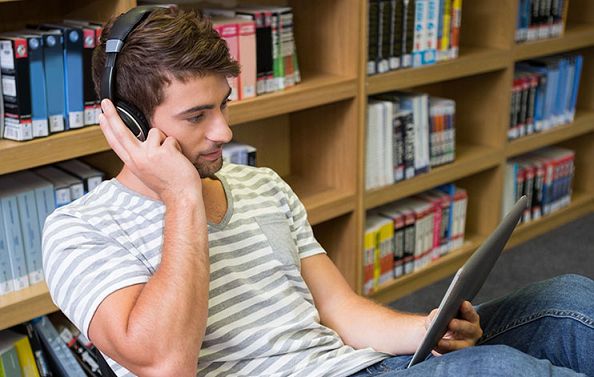
- Lack of IT Knowledge: If students don’t understand how to use the necessary technology, there is a learning curve that can interfere with their ability to absorb the course material.
- Lack of Discipline: If students aren’t disciplined about keeping up with online material, they can easily fall behind in their coursework.
- Untrained Faculty: Teachers must be trained to incorporate new technologies successfully into their courses in a way that engages students, making the content accessible.
- Faculty Flexibility: Teachers must be open to adjusting their teaching styles to accommodate new ways of delivering material.
- Competing Priorities: Students must have the time to do coursework at home, despite the demands of their jobs or extra-curricular activities.
- Access: Students must have access to the necessary technologies for blended learning to be successful.
- Outdated Tools: The technology used in blended learning must be kept up to date, because students, more than most people, will be adopting the latest technologies.
As you can see, the positives of blended learning far outweigh the negatives, and it’s apparent that students will encounter blended learning wherever they study. In fact, many post-secondary institutions such as George Brown College and the University of Toronto are already using this model in a number of courses, while school boards are also beginning to incorporate it into their curriculums. Organizations such as Blended Schools Network has begun to pop up in order to assist this transition. Why not be prepared?
What is a hybrid class – summary infographic
You can learn more about blended learning and what goes on in a hybrid class with the below infographic. This infographic aims to be a quick snapshot that can help you familiarize yourself with blended learning—fast!
